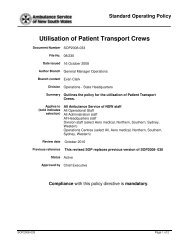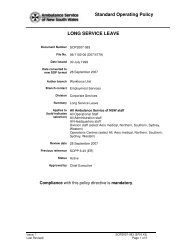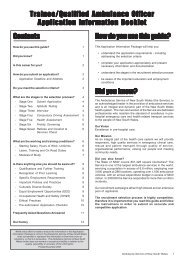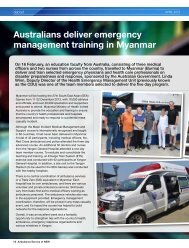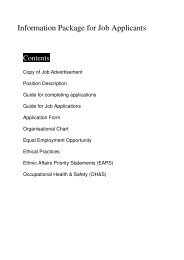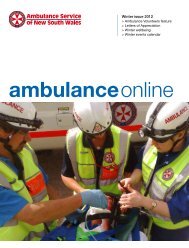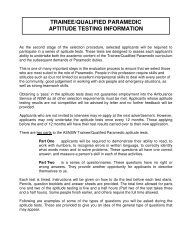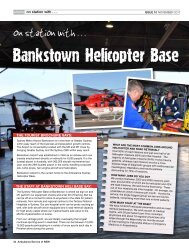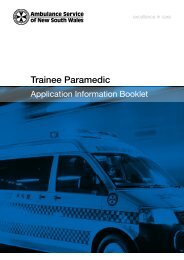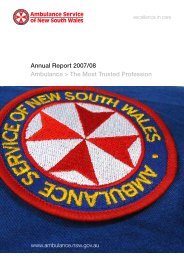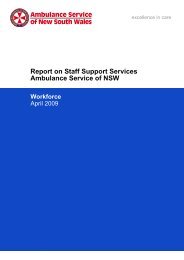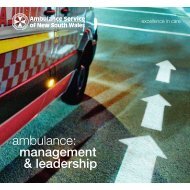atsb final report released 16 may 2013 - Ambulance Service of NSW
atsb final report released 16 may 2013 - Ambulance Service of NSW
atsb final report released 16 may 2013 - Ambulance Service of NSW
You also want an ePaper? Increase the reach of your titles
YUMPU automatically turns print PDFs into web optimized ePapers that Google loves.
patient and himself directly underneath the winch. Once they were directly belowthe winch, it was intended that the duty paramedic would discard the stabilisingrope and the ACM would then winch them up into the helicopter.The specific construction <strong>of</strong> the stabilising rope system, including the manner inwhich it would be secured to the rock ledge, was not discussed by the crew duringthe planning stage. The support paramedic and ACM recalled that the dutyparamedic advised that he intended to establish the stabilising rope system using adifferent rope to the tag line. Specifically, the support paramedic recalled intendingto use a red safety line that was part <strong>of</strong> the roping equipment carried by SCATpersonnel. In contrast, the pilot <strong>report</strong>ed that he understood the duty paramedicintended to use the yellow tag line as a stabilising system.Figure 4: Stabilising rope system (coloured red in this graphic, which issequenced left to right)Source: ATSBThe support paramedic <strong>report</strong>ed that the duty paramedic described the use <strong>of</strong> thestabilising rope with reference to a similar technique used during a previoushelicopter rescue that was well known to the SCAT paramedics. The supportparamedic stated that he initially expressed concern with the use <strong>of</strong> that technique,specifically the potential difficulty <strong>of</strong> arresting the pendulous tendency associatedwith the laterally <strong>of</strong>fset position <strong>of</strong> the helicopter. The support paramedic <strong>report</strong>edthat, following additional explanation <strong>of</strong> the intended plan by the duty paramedic,he was satisfied that the risk associated with this hazard had been adequatelymitigated.During the planning stage, the ACM advised the crew that he was unfamiliar withthe intended stabilising technique and enquired how the stabilising rope would bedetached once the patient and paramedic were directly under the winch. The ACM<strong>report</strong>ed that the duty paramedic advised that once he and the patient were in thatposition, he would disconnect from and discard the stabilising rope prior to theACM winching them up and into the helicopter (Figure 4).The ACM later <strong>report</strong>ed that he had been assured by the other crew members thatthe rescue plan was not exceptional in emergency medical service (EMS)operations. This was consistent with the doctor’s recollection that, in response to- 4 -



